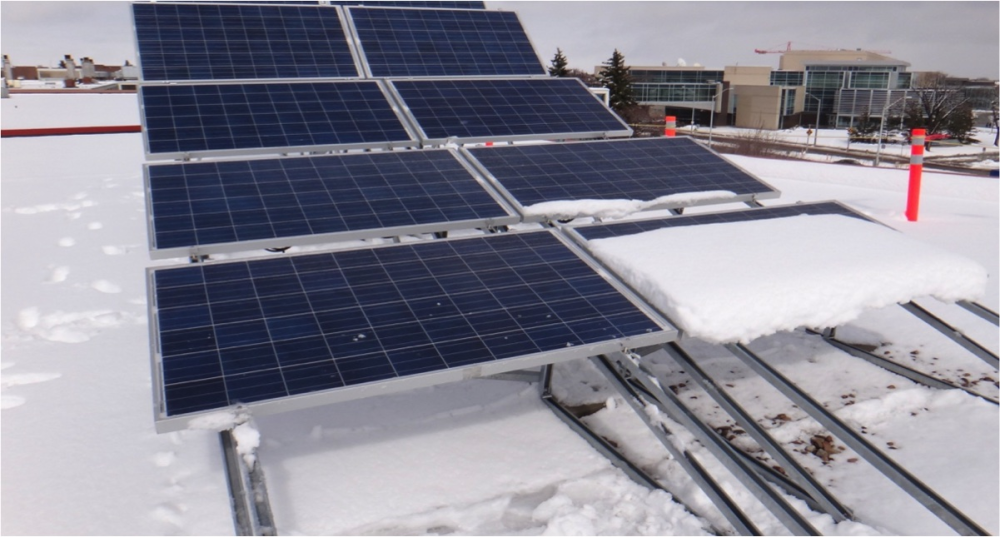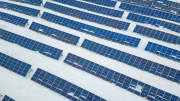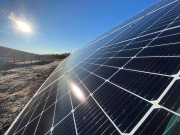In Greek mythology, Icarus, while escaping Crete wearing homemade wings, ignores the advice of his father and, in an act of hubris, flies too close the sun. The wax holding his feathery wings together melts and he falls to his death.
As it turns out, it’s important to respect one’s father and the sun! We recognize this famous Greek story because it is a valuable myth, one with a worthwhile lesson. The myths we are concerned about, the ones of dubious value, are crazy stories that are passed off as facts when talking about solar energy.
Climate — Solar and the long, cold Canadian winter
Let’s start with one of my favourite myths: “We are simply too far north here to capture much of the sun’s energy.”
To get to the bottom of these solar myths we talked to Gordon Howell, a solar expert with Howell-Mayhew Engineering.
Too far north? "No, it's not true that Canada is too far north for solar energy. We have about 50 per cent more [solar] energy than Germany, for example, which has a huge number of solar installations," says Howell.
Batteries not included. As Howell explains, solar tends to produce more electricity than a facility needs in the summer, but that energy isn't wasted. Solar is always connected to either the grid or a battery system. And grids can accommodate a significant amount of solar energy — as they do with wind — since grids already have to have enough duplication of base load capacity to cover the shutdown of a large coal, gas or nuclear power plant.
Isn’t snow a solar killer? Howell helped design the Edmonton Solar PV Reference Array at the Northern Alberta Institute of Technology, which collects data about solar. "[Based] on the first winter's worth of data, we found out that the snow only reduced the annual energy generation by five per cent." The system has six pairs of solar modules mounted at different angles, with half of them shielded against snowfall. Howell says depending on the system you could lose five to 15 per cent of production from snow cover.
Solar doesn’t work in the cold. We love this one, because it turns out solar modules actually work better in the cold. "At minus 45, for example, a solar PV system would be working 29 per cent better than its rating. And when it's plus 70, because the solar modules get really hot in the summer, it's working 17 per cent less. That cold actually helps to mitigate, to a small degree, the fact that we generate less in the wintertime."
Indeed, it is theoretically possible to provide all of the electricity required by humanity by covering only one per cent of the Sahara Desert with solar modules. And that isn’t a dream project either.
The red herring of efficiency
 Solar is only 15 per cent efficient. You may have heard how solar modules are only capable of converting 15 to 20 per cent of the sun’s energy into electricity, which suggests the technology is terribly inefficient. Howell calls this a red herring since the supply of solar energy is virtually unlimited.
Solar is only 15 per cent efficient. You may have heard how solar modules are only capable of converting 15 to 20 per cent of the sun’s energy into electricity, which suggests the technology is terribly inefficient. Howell calls this a red herring since the supply of solar energy is virtually unlimited.
Besides, as Howell notes, "the oldest coal-fired generators in Alberta are running around 23 per cent efficient. The new methane-fired ones are around 50 per cent, wind generators are around 45 per cent, and diesel generators range between 15 and 33 per cent [efficient].”
"We don't care if we waste the solar resource,” says Howell, but we should care if we waste coal or natural gas.
In the end it’s the cost and benefits that will determine solar’s value, not how many modules it takes to produce electricity. The efficiency of solar modules has improved from about 10 per cent when Howell installed his own system 30 years ago to 16 per cent today. This means it now requires less roof space to generate the electricity you need for your home.
Embodied energy? You may have heard that it takes more energy to make a solar module than it will produce over its lifetime. If this was true of course no one would invest in solar. Estimates vary, but the ballpark estimate is that it takes 2.5 years to produce as much energy as it takes to build and install a solar PV system. For comparison wind has a so-called energy payback of just over a year, while coal-fired power plants are about 3.67 years. The bottom line: it takes energy to make any power plant, but renewable energy stacks up pretty well. Not to mention you don’t have to dig around in the dirt to find fuel for them. It just falls from the sky!
The surprising price of solar
Solar is ridiculously expensive. The price of solar modules has come down more than 95 per cent since 1977. Howell installed one of the first solar systems in Alberta on his home. "My system cost $40,000 to install in 1995," says Howell. "Today, we could do that same system for $9,000."
That means Howell paid $17/watt for the installed price on his 2.3 kilowatt solar system in 1995. Today you can install a 10 kilowatt system for $3.50/watt or less and a large 2,000 kilowatt system for about $2.8/watt, or less!
At these prices solar really starts to make sense. Howell predicts solar will grow from eight to 2,000 megawatts in Alberta by 2024.
So let’s keep all this in mind lest our own hubris causes us to miss out on the coming solar wave.










